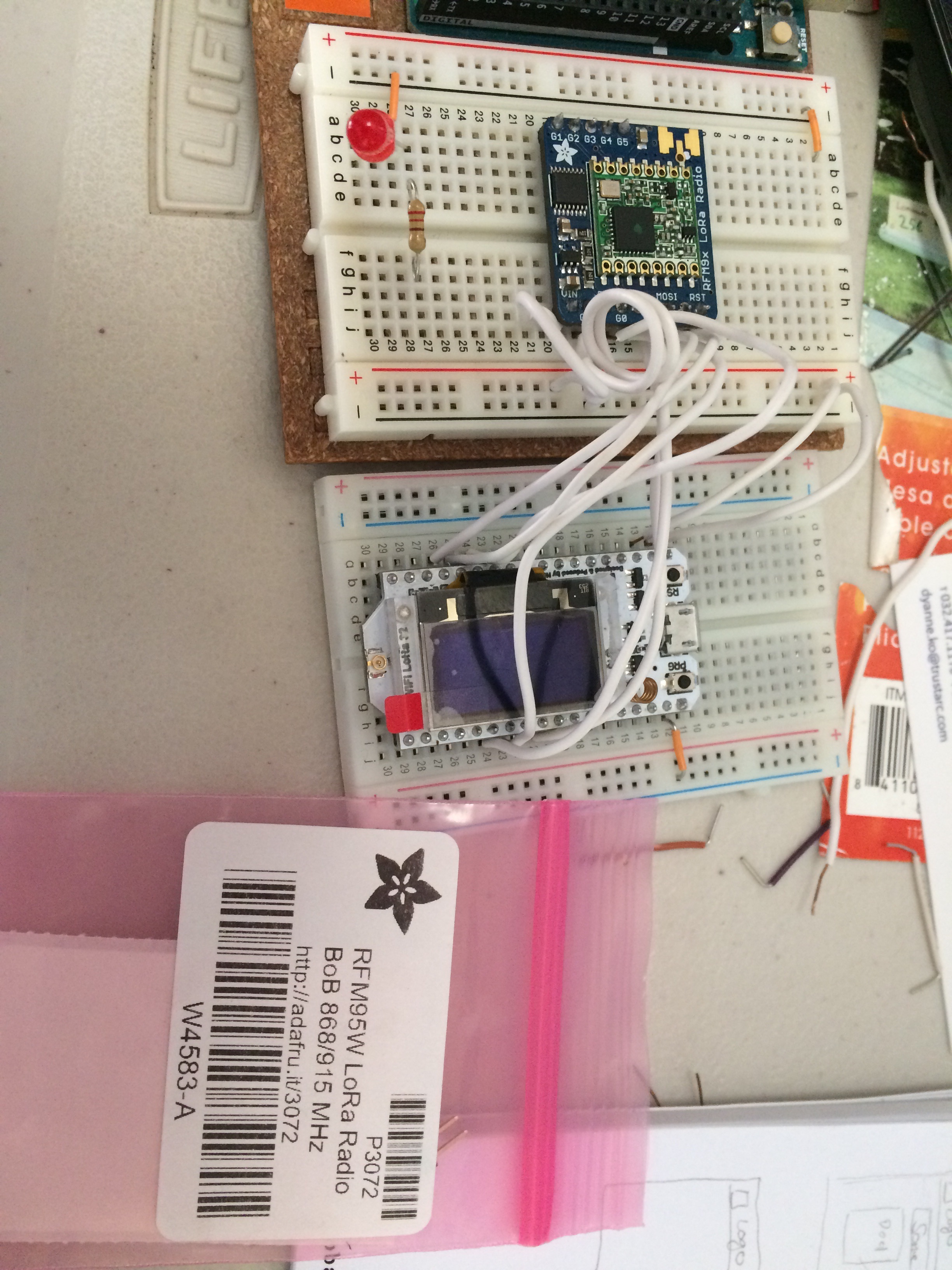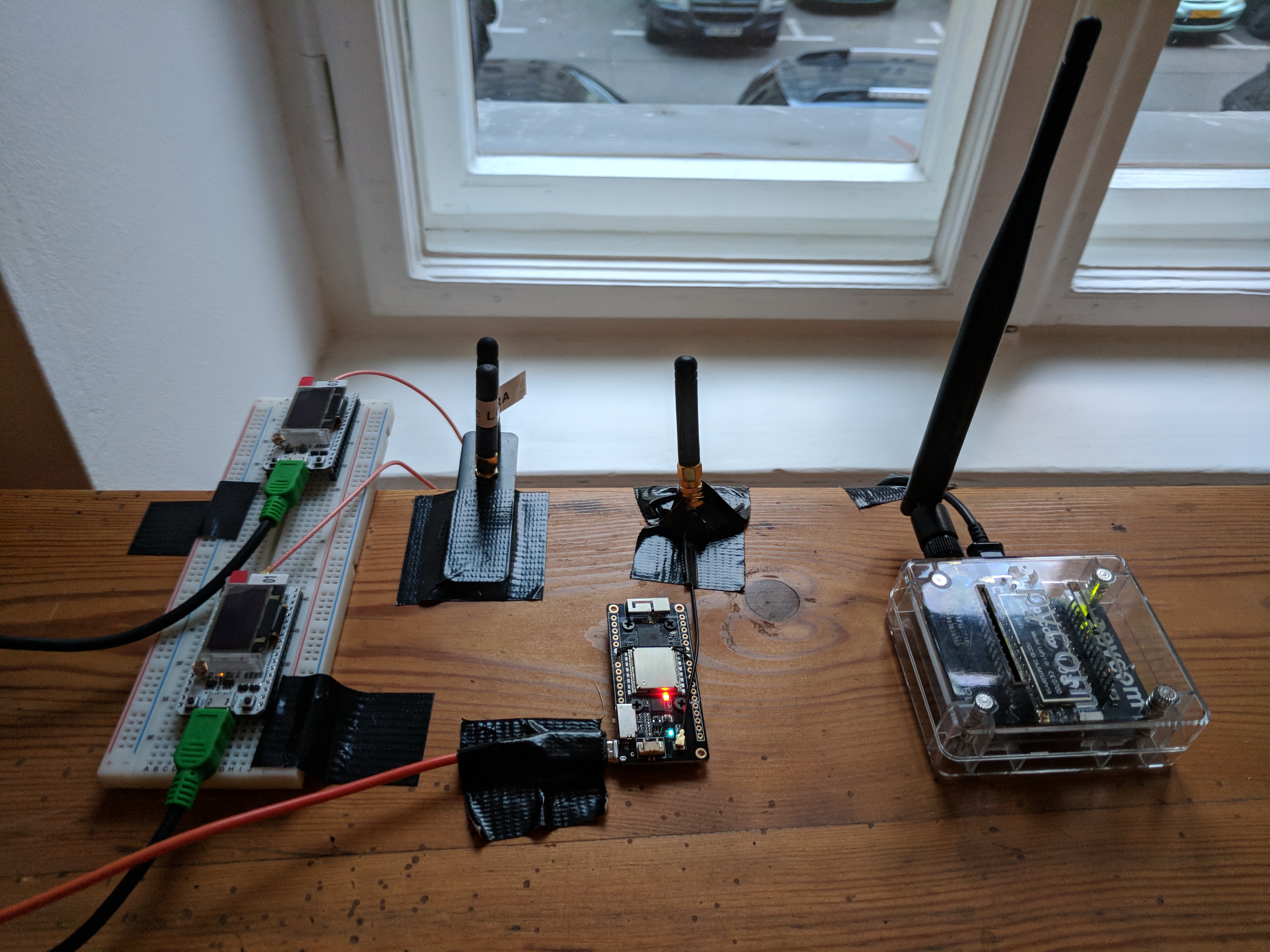Hi,
This is my first post to this forum 
I really enjoy all the informations collected here : thanks for that.
I did follow a lot of this topic, together with Andrea’s review of the ESP32 ready made boards and their quite poor design…
So I decided to build my own, and as you will see it is really easy !
take an ESP32 Lolin lite V1 board
take an RMF95W lora module
take a Hallard’s shield for hopeRF
Add a nice dipole antenna
Stack all this together and you get your tiny compact ESP32 gateway 
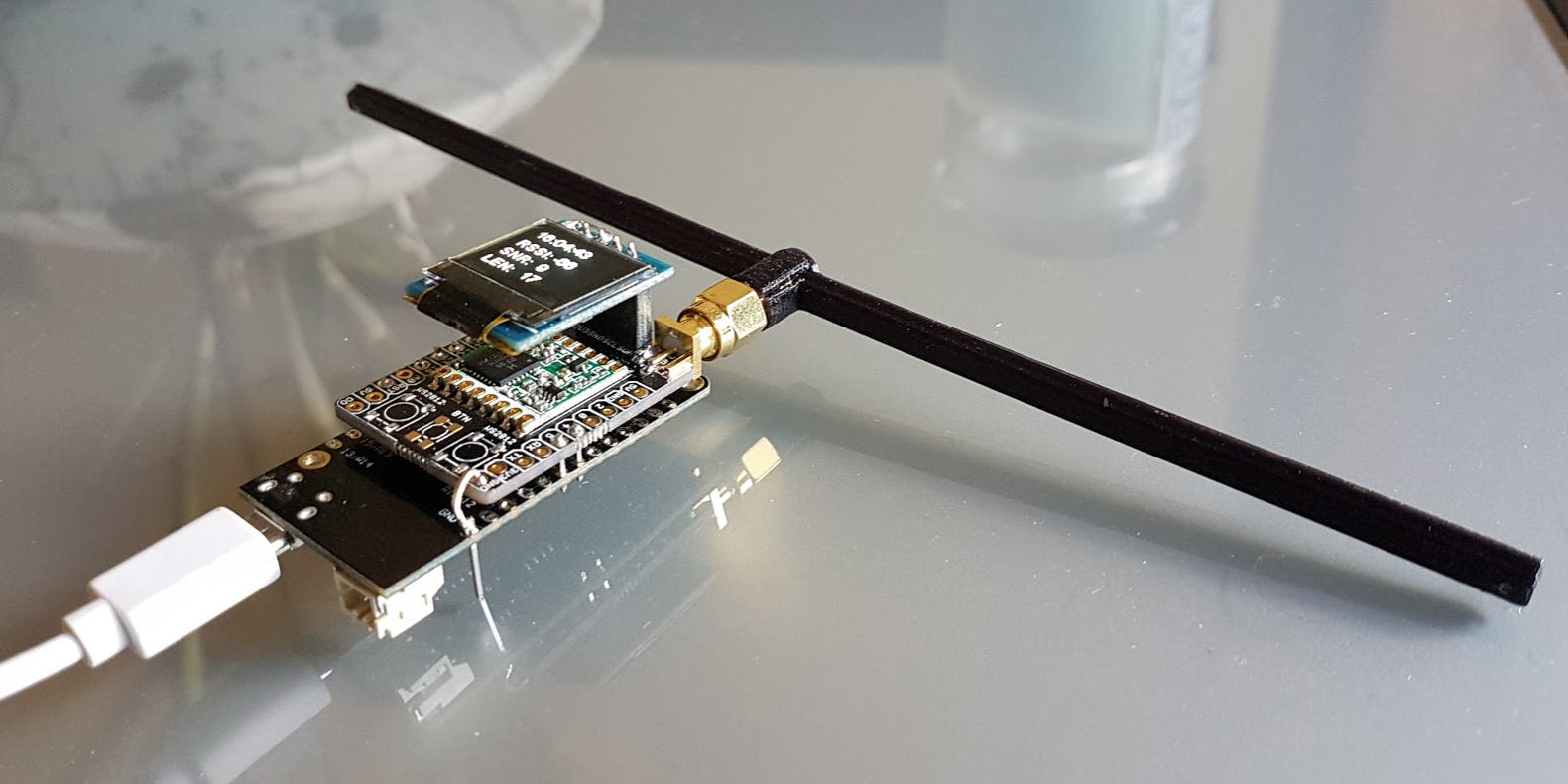
As you can see, the Hallard’s shield and the Lolin32 lite do have the same pin spacing. And, as you can mux pretty much all the pins on the ESP32, it’s easy to adapt the software.
Only the +3.3V and the Gnd need a separate pin, but both of them are very close !
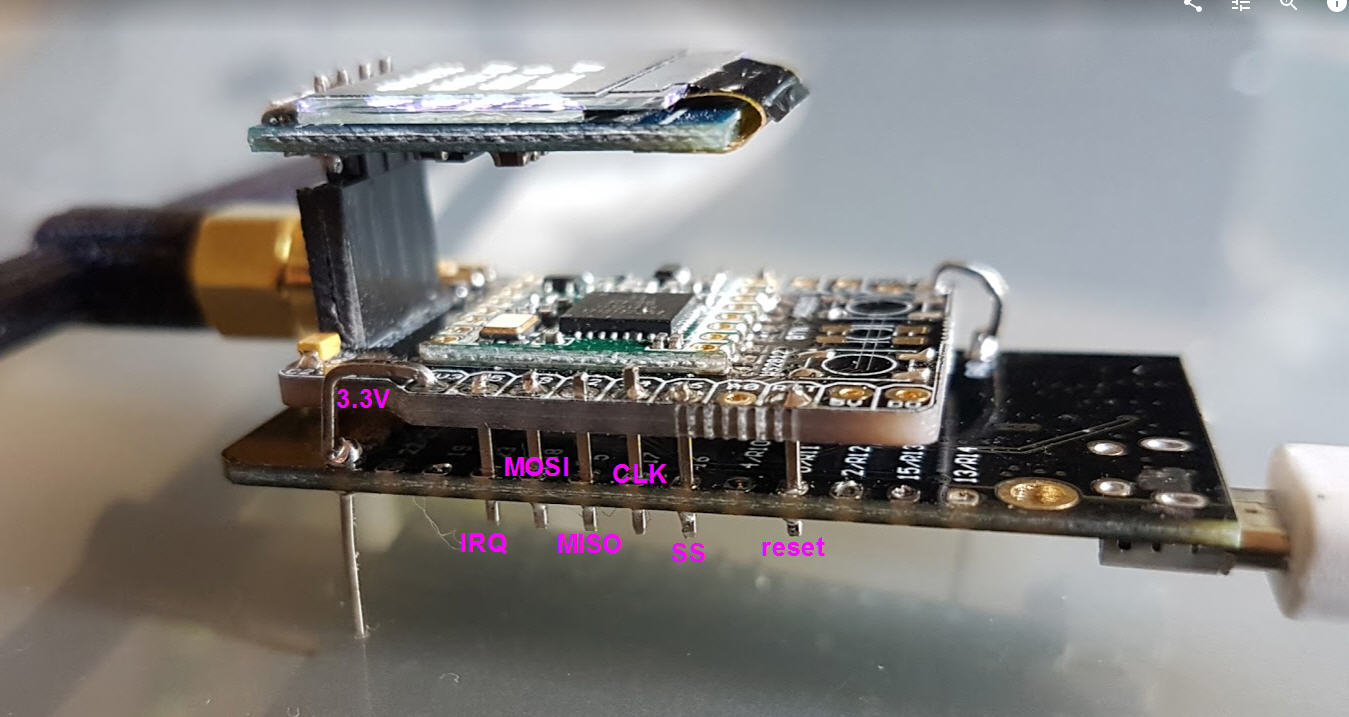
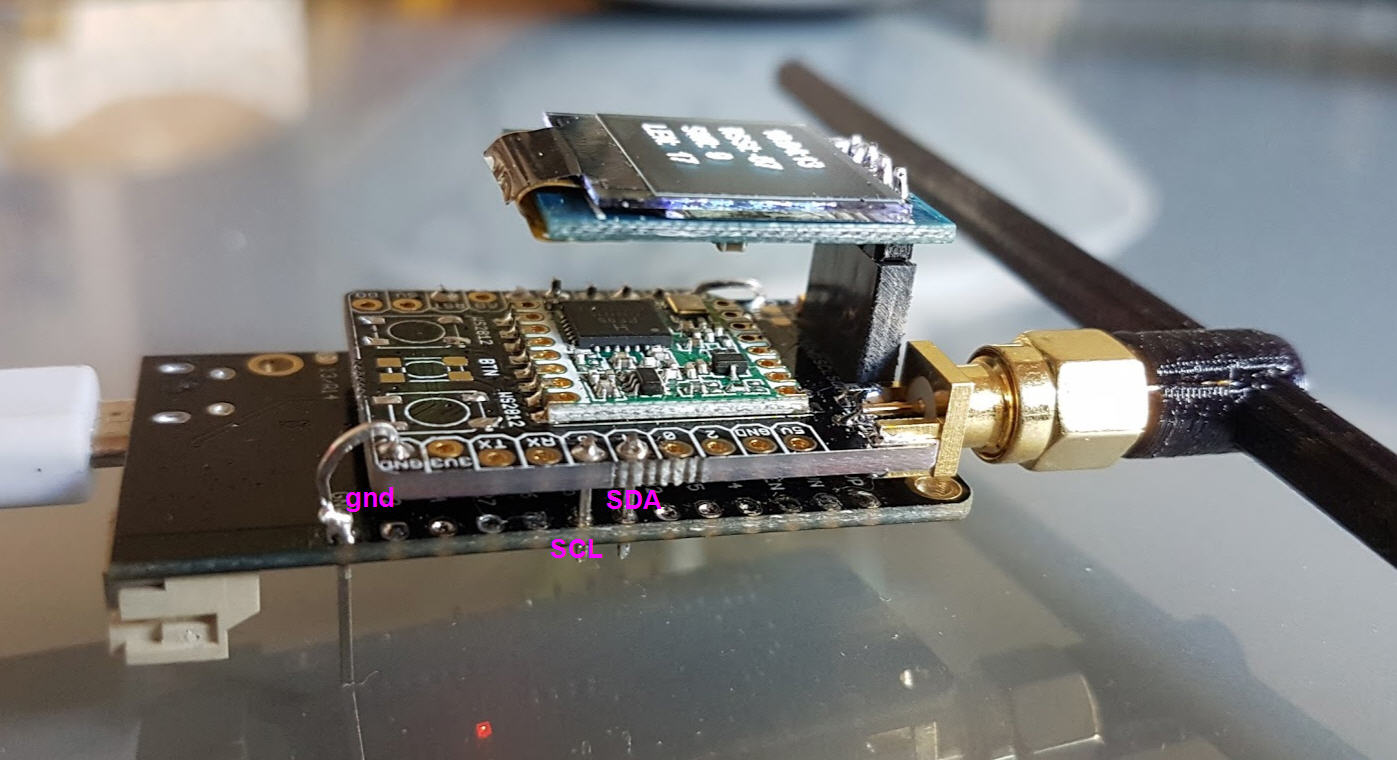
Pin Mapping is done as follow:
// if OLED Display is connected to i2c
// OLED 2 requires this updated library that is resolution independent https://github.com/DaveRichmond/esp8266-oled-ssd1306
#define OLED 1 // Make define 1 or 2 on line if you have an OLED display connected 1=128x64 2=64*48
#if OLED>0
#define OLED_SCL 25 // GPIO5 / D1
#define OLED_SDA 33 // GPIO4 / D2
#endif
and
// Use your own pin definitions, and uncomment #error line below
struct pins {
uint8_t dio0=23; // GPIO5 / D1. Dio0 used for one frequency and one SF
uint8_t dio1=23; // GPIO4 / D2. Used for CAD, may or not be shared with DIO0
uint8_t dio2=23; // GPIO0 / D3. Used for frequency hopping, don’t care
uint8_t ss=16; // GPIO15 / D8. Select pin connected to GPIO15
uint8_t rst=0; // GPIO0 / D3. Reset pin not used
// Pin definetion of WIFI LoRa 32
// HelTec AutoMation 2017 support@heltec.cn
#define SCK 17 // GPIO5 – SX127x’s SCK
#define MISO 5 // GPIO19 – SX127x’s MISO
#define MOSI 18 // GPIO27 – SX127x’s MOSI
#define SS 16 // GPIO18 – SX127x’s CS
#define RST 0 // GPIO14 – SX127x’s RESET
#define DI00 23 // GPIO26 – SX127x’s IRQ(Interrupt Request)
} pins;
//#error “Pin Definitions _PIN_OUT must be 1(HALLARD) or 2 (COMRESULT)”
#endif
I have tested it with:
Loragateway V5
Lmic as a lorawan node
lora library as sender or receiver
Range as been measured to more than 8.7km with this antenna, SF11 and BW 125
Quite happy with this result 
JP


